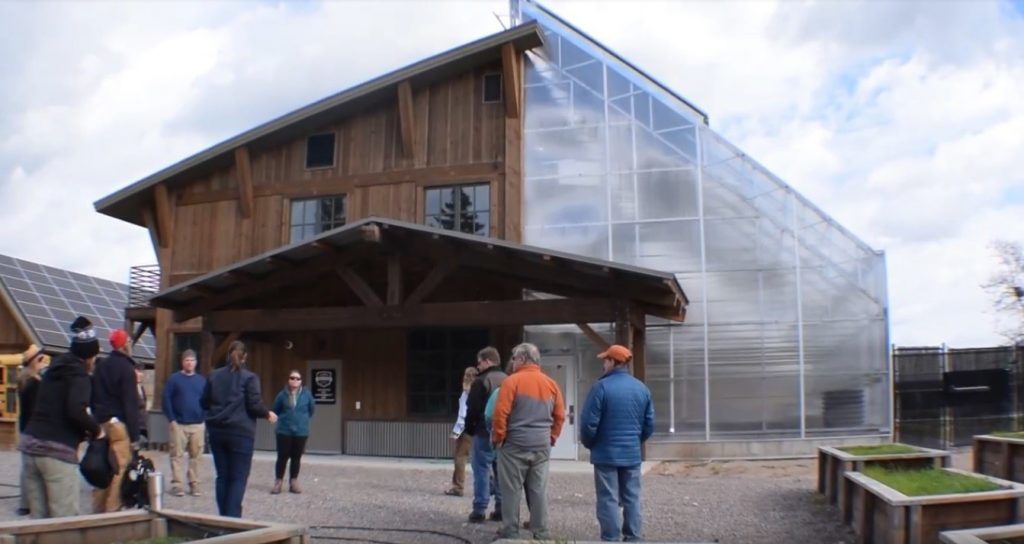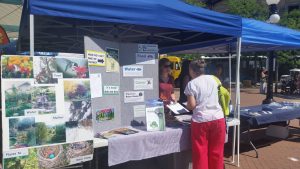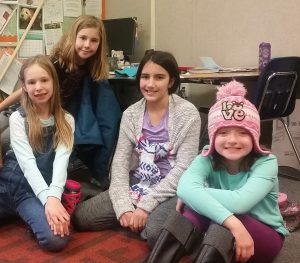By Sophia Valenzuela
When the bell rings at Whitefish High School to signal the start of fourth period, you can barely hear it over the shuffle of coats being removed and the thud of boots. But the class sitting in front of me isn’t a group of teenagers—instead, they’re tumbling kindergartners trying to get the best spot on the carpet. We’re at the Center for Sustainability & Entrepreneurship—a mouthful of a title that refers to the classroom/greenhouse facility looming next to the high school student parking lot. The CSE is impressive for many reasons. It’s on track to become the first net-zero public facility in Montana (thanks to a 31 kW solar system installed on the roof). It maintains a four-season greenhouse with temperatures 15 degrees higher than the outdoors using air circulation rather than natural gas heating. And it partners with farmers, ranchers, electricians, the Forest Service, the National Park service, and many local nonprofits to develop new programming. But the most remarkable thing about the CSE is that in the mere 8 months it’s been open, it has already succeeded in its ambitious goal to involve K-12 students and community members in every project it undertakes.
During the month of October, that project is seed saving. Seed saving is a long process that, as can be assumed from the name, involves saving seeds from produce, cleaning and drying them over the winter months, and then planting them in the spring. Seed saving allows gardens to operate in a truly cyclical way, a hallmark of permaculture, while eliminating the cost of buying new seed every year. The CSE’s seed saving program is sponsored by several local companies, including The Good Seed Co., and the annual Free the Seeds fair. And the best thing about seed saving is that anyone can do it—even the 6-year-olds sitting in front of me.
After being sorted into groups, the kids head to their tables where they find vibrant piles of herbs and vegetables laid out in front of them. Their goal: to pick out all the seeds from their sweet peppers, sunflowers,tomatoes, beans, and herbs, and collect them in cups. As they saw away at the veggies with plastic cafeteria knives, the excitement in the room is palpable. It’s one thing to eat vegetables, it’s quite another to get to chop them up and discover the glistening seeds hiding inside.
“Can I take this sunflower seed home to start my farm?” one boy asks, triumphantly holding up the dark seed he’s managed to pry out of the flower. “This is better than recess!” yells another, shaking his cup full of small, egg-shaped seeds. They’re from a Chinese herb known as zi cao, the roots of which are used in traditional Chinese medicine to treat liver disease and improve blood circulation. Mentioning this causes his mouth to widen in amazement—imagine, plants can keep you healthy! It sounds like magic. During their day of seed saving, the students learn valuable lessons about new plants and about the importance of eating your vegetables. But they’re also provided with a hands-on entrance into the world of farming and given a visceral way to understand the importance of seed saving. They learn that seed saving is necessary for a sustainable garden, and also that it’s fun!
And it’s not just kindergartners who get to benefit from the CSE’s seed saving program. Middle schoolers have also gotten to try their hand at it—from fermenting tomato seeds in yogurt containers to using a sieve to separate tiny thyme seeds from their fragrant leaves. High school students will complete the process in the coming months, designing and building their own air separators for heavy seeds, learning how to package and market seeds, and testing germination rates. A seed packaging community event is already in the works to support Free the Seeds in the spring and allow even more Flathead residents to grow and enjoy local produce.
A laughing kindergartner digging her fingers into a tomato might not be the image that springs to mind when you think of an expensive green facility like the CSE. But as a representative of the City of Whitefish and the Whitefish School District, nothing feels more rewarding than seeing the Center functioning in exactly the way it was meant: bringing people of all ages together to learn the value of community, and the value of the beautiful place we live.








